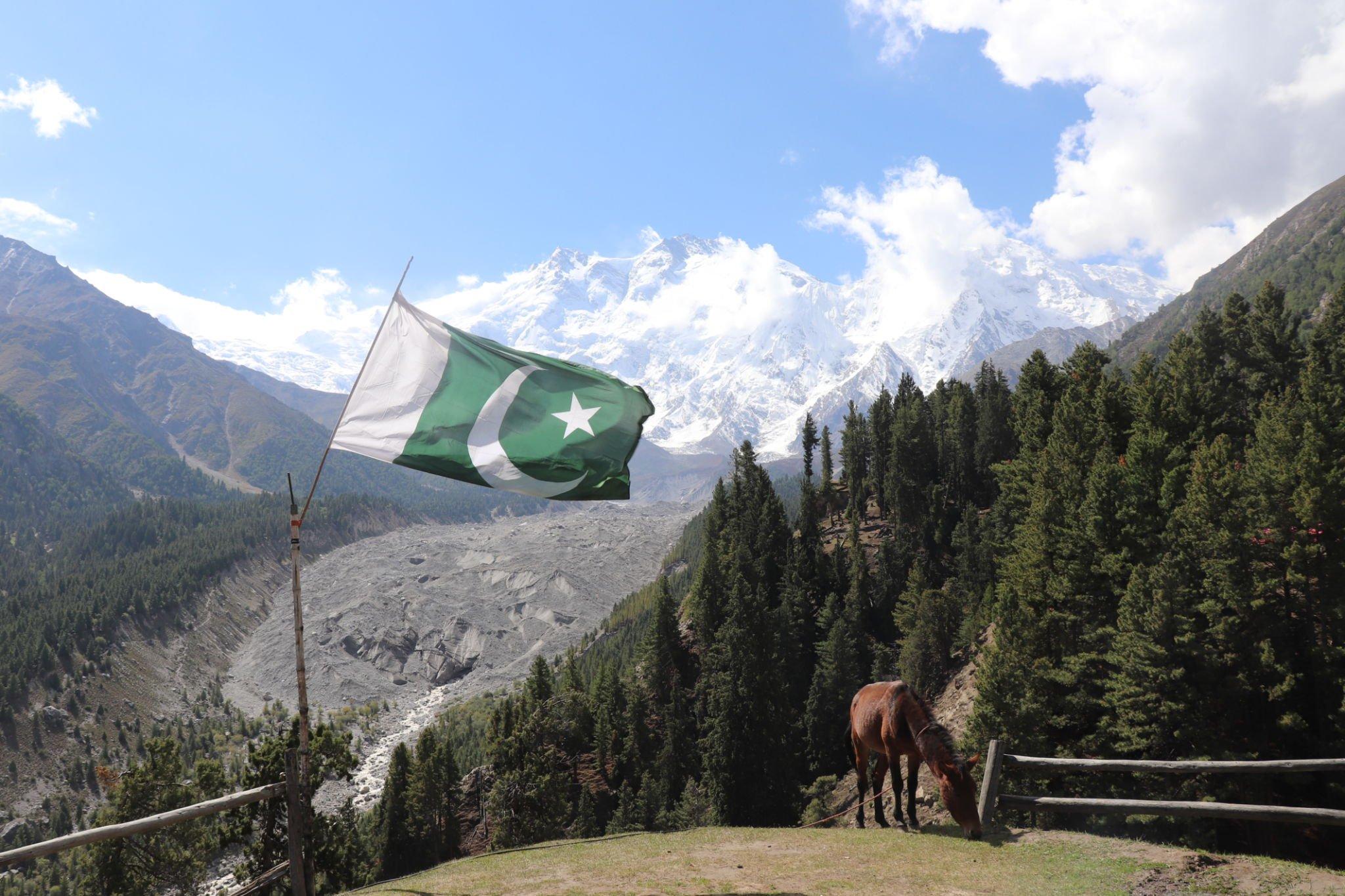Pakistan is a country that captures the hearts and imaginations of travelers with its rich history, diverse culture, and breathtaking landscapes.
From vibrant cities to serene valleys, this South Asian nation offers a tapestry of experiences that are as unique as they are captivating. In this article, we’ll delve into some of the most incredible destinations that make Pakistan famous.
Nestled in the heart of South Asia, Pakistan emerges as a captivating nation celebrated for its multifaceted allure. From the majestic Himalayas gracing its northern horizons to the pristine beaches caressed by the Arabian Sea, Pakistan’s geographical diversity is awe-inspiring. But its fame extends far beyond its natural splendors.
Pakistan is a land that resonates with the echoes of ancient civilizations. This region is steeped in history, with the Indus Valley Civilization, one of the world’s earliest urban cultures, flourishing on this very soil thousands of years ago. Cities like Mohenjo-daro and Harappa stand as remarkable testaments to the sophistication and ingenuity of this bygone era. If you’re interested in exploring how modern sustainable building approaches are making a positive impact in today’s world, you can also delve into this intriguing aspect of human progress on the Sustainable Building Approaches page at Tales of Travelers.
Moving through time, the legacy of the Mughal Empire still lives on in Pakistan’s architectural marvels. The Badshahi Mosque, a resplendent masterpiece, stands in Lahore as a symbol of the empire’s grandeur. These structures whisper tales of emperors and artists who shaped the nation’s history.
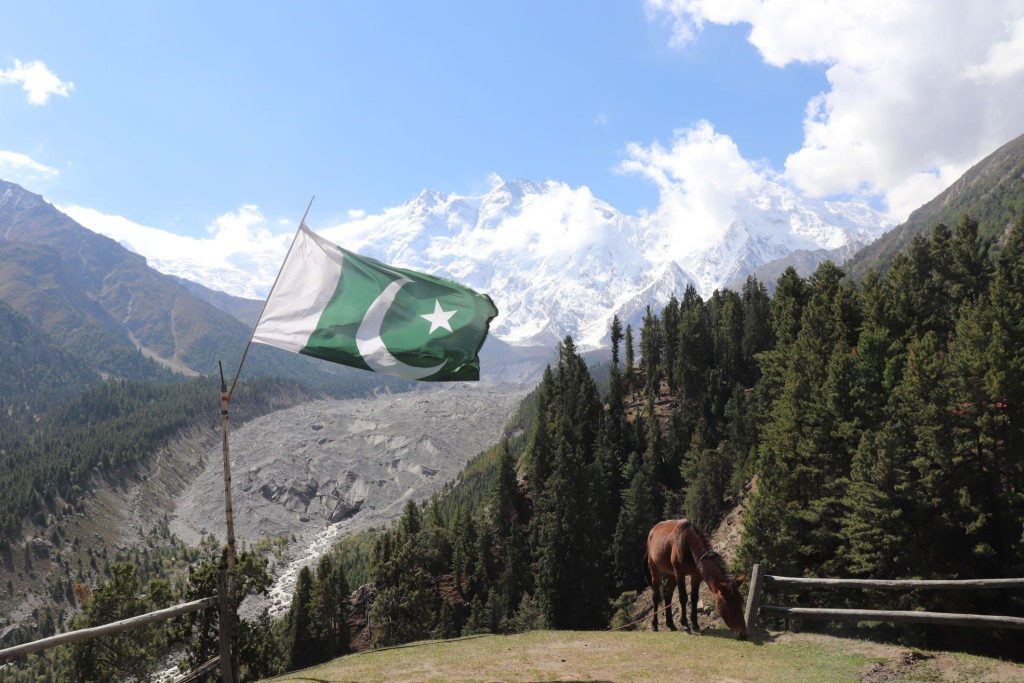
Yet, Pakistan’s fame is not only etched in stone; it dances through its festivals and celebrations. The vivacity of Basant, the serenity of Eid-ul-Fitr, and the devotion of Urs festivals collectively paint a picture of a nation deeply rooted in its traditions.
Beyond the cultural canvas, Pakistan’s culinary treasures enthrall the senses. The spices, the flavors, and the artistry of its cuisine offer a taste of the country’s soul.
Hospitality, an integral part of Pakistani culture, welcomes visitors as family, weaving them into the vibrant tapestry of this remarkable land.
In this exploration of what Pakistan is famous for, we embark on a journey that transcends boundaries and time. It’s a journey into a realm where history, nature, and humanity converge, inviting you to immerse yourself in the enchantment of Pakistan’s culture and heritage.
Contents
- 1 Islamabad: The Modern Capital
- 2 Lahore: Where History Comes Alive
- 3 Karachi: The Coastal Metropolis
- 4 Quetta: Gateway to Balochistan
- 5 Azad Kashmir: A Paradise on Earth
- 6 Multan: The City of Saints
- 7 Swat Valley: Where Nature Reigns
- 8 Gilgit-Baltistan: Majestic Mountain Ranges
- 9 Mohenjo-Daro: A Glimpse into the Past
- 10 Shalimar Gardens: A Mughal Retreat
- 11 Pakistan Monument: Symbol of Unity
- 12 Faisal Mosque: A Modern Marvel
- 13 Lahore Fort: Where Royalty Resided
- 14 Tomb of the Seven Sisters: Mystical Heritage
- 15 Minar-e-Pakistan: Marking History
- 16 Wagah Border: The Beating Retreat Ceremony
- 17 Badshahi Mosque: A Mughal Gem
- 18 Babusar Top: Where Earth Touches the Sky
- 19 Lulusar Lake: Mirror of the Mountains
- 20 Hunza Valley: A Gem in the North
- 21 Hingol National Park: Where the Desert Meets the Sea
- 22 Pakistan-China Border: Khunjerab Pass
- 23 Attabad Lake: Nature’s Artistry
- 24 Conclusion
Islamabad: The Modern Capital
The journey begins in Islamabad, the modern capital of Pakistan, known for its meticulously planned layout and lush greenery, serving as a testament to the country’s progress. One of its remarkable landmarks, the Faisal Mosque, an architectural marvel, graces the city’s skyline, welcoming both worshippers and admirers alike.
For those seeking to explore cultural highlights from around the world, don’t miss out on the captivating Latvian Cultural Highlights. Discover more about what Latvia is known for on their page.
Islamabad, the capital city of Pakistan, stands out as an embodiment of ambition, precision, and architectural modernity.
Nestled against the backdrop of the magnificent Margalla Hills, Islamabad is more than just a political epicenter; it’s a harmonious blend of history, culture, and natural beauty.
Master-planned by the Greek architect Constantinos Apostolou Doxiadis in the 1960s, the city radiates a sense of order and serenity, a stark contrast to many bustling capitals around the world.
With wide, tree-lined avenues, striking governmental structures, and verdant parks, Islamabad reflects Pakistan’s aspiration for progress and innovation.
Moreover, the city serves as a gateway to northern adventures, with its proximity to historic sites like Taxila and natural wonders such as the Murree Hills. It’s a city that beckons visitors to delve deeper, beyond its polished exterior.
Lahore: Where History Comes Alive
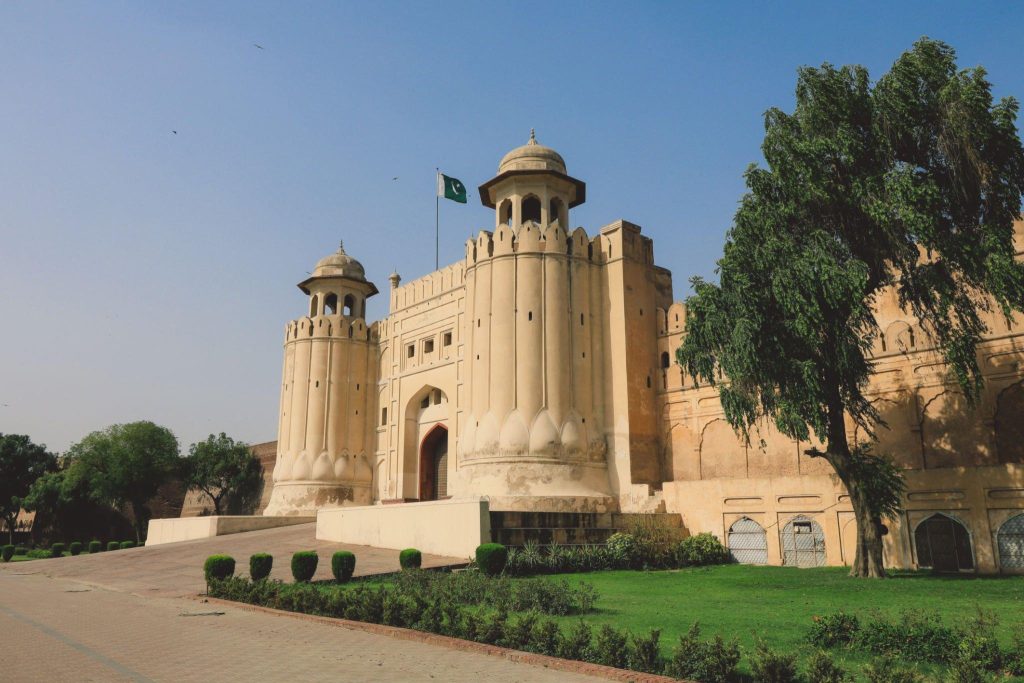
Lahore, often referred to as the heart of Pakistan, is a city steeped in history and culture. The Lahore Fort, a UNESCO World Heritage Site, showcases Mughal grandeur, while the Badshahi Mosque and Wazir Khan Mosque stand as magnificent examples of Islamic architecture. Lahore, often referred to as the “Heart of Pakistan,” is a city steeped in history, culture, and vibrant life.
As the capital of the Punjab province, it serves as a vital economic and cultural hub. Its streets narrate tales of various epochs – from Mughal emperors with their grand fortresses and gardens to the colonial charm of the British era, right through to its contemporary status as a bustling metropolitan.
Famed for its food, literature, and warm-hearted residents, Lahore epitomizes a blend of the old and the new. A city where ancient bazaars coexist with modern shopping malls and where traditional festivals are as eagerly anticipated as contemporary music concerts. Lahore is not just a city; it’s an experience, echoing centuries of stories waiting to be explored.
Karachi: The Coastal Metropolis
As Pakistan’s largest city and a bustling seaport, Karachi is a dynamic hub of commerce and culture. Its beaches, including Clifton Beach and French Beach, offer a welcome escape from the urban hustle. For those interested in delving into the French Revolution legacy and its historical significance, explore our page on French Revolution Legacy.
Karachi, often dubbed as the ‘City of Lights’, is more than just Pakistan’s largest city—it’s a vibrant tapestry of cultures, languages, and histories, all converging along the Arabian Sea.
As the country’s economic juggernaut, Karachi is a bustling metropolis, teeming with markets, skyscrapers, and a dynamic port that stands as a testament to its historical significance in trade and commerce.
The city is an intricate blend of tradition and modernity, where colonial-era buildings stand alongside contemporary architecture.
But beyond its urban façade, Karachi is a melting pot of diverse ethnicities, each contributing to the city’s rich cultural tapestry. From its delectable cuisine to its spirited arts scene, Karachi encapsulates the soul and essence of Pakistan in every corner.
Quetta: Gateway to Balochistan
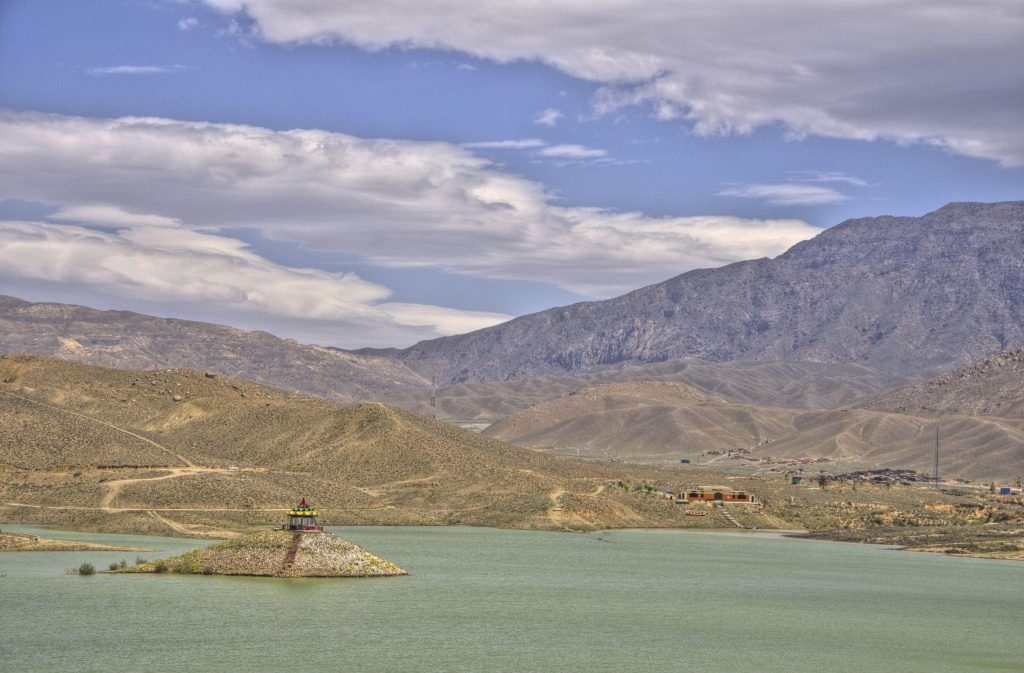
Quetta, nestled between rugged mountains, serves as the gateway to the province of Balochistan. The Chiltan Adventurers Association offers thrilling opportunities for mountaineering and exploration.
Quetta, often referred to as the “Fruit Garden of Pakistan,” is a city that perfectly embodies the intersection of nature’s beauty with a rich tapestry of history and culture.
Nestled in the Balochistan province of Pakistan, Quetta is more than just a provincial capital; it’s a testament to the region’s resilience, diversity, and undying spirit.
Surrounded by rugged mountains and serene landscapes, the city offers a unique blend of modernity and tradition. With its bustling bazaars, historic sites, and vibrant local life, Quetta is a melting pot of various ethnicities, including the Baloch, Pashtuns, and Hazaras.
As one ventures into this city, they’re not just exploring a place, but delving deep into a mosaic of stories, tastes, and experiences.
Azad Kashmir: A Paradise on Earth
Azad Kashmir, often referred to as Pakistan’s paradise, is a region of unparalleled beauty. The captivating Neelum Valley, with its meandering rivers and lush forests, enchants every visitor.
Azad Kashmir, often referred to as “Heaven on Earth”, is an administrative territory located in the northern part of the Indian subcontinent.
This picturesque region, part of Pakistan-administered Kashmir, is renowned for its lush green valleys, snow-capped mountains, and meandering rivers that paint a serene landscape.
Beyond its natural wonders, Azad Kashmir is rich in history and culture, with its origins tracing back to ancient civilizations.
The area, despite being a political hotspot due to territorial disputes, remains a testament to the resilience and vibrant spirit of its inhabitants.
Azad Kashmir stands not only as a geographical marvel but also as a melting pot of diverse traditions, art forms, and cuisines, making it a must-visit for any avid traveler or history enthusiast.
Multan: The City of Saints
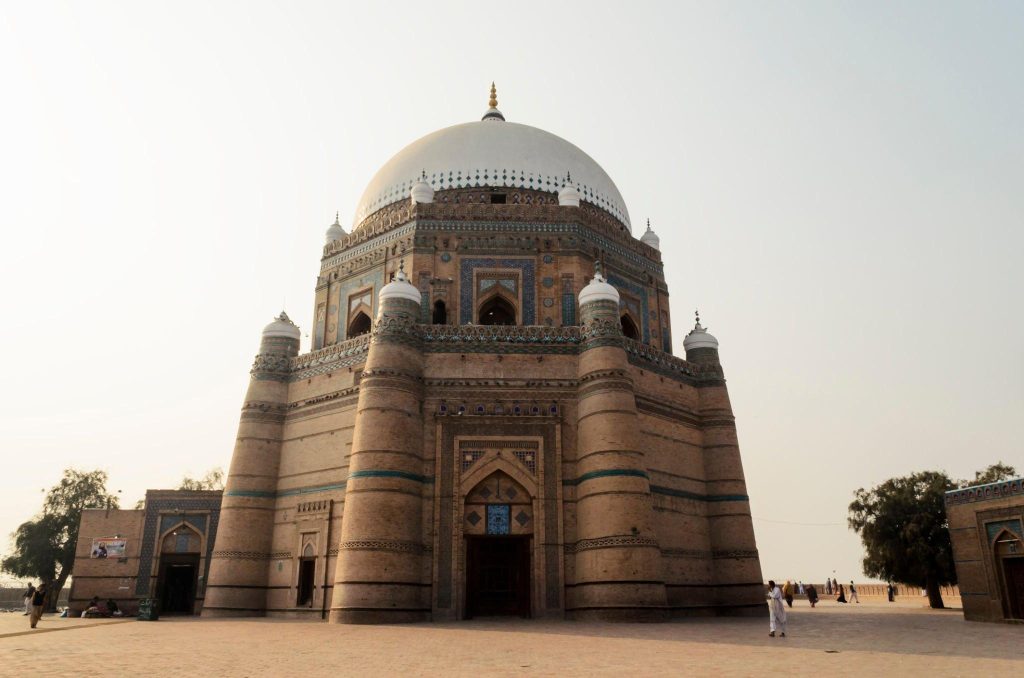
Multan, known as the City of Saints, boasts a rich spiritual heritage. The shrines and bazaars offer an immersive experience into Sufi culture. Multan, nestled in the heart of Pakistan’s Punjab province, is a city steeped in ancient history and spiritual significance.
Often referred to as the “City of Saints,” Multan has been a pivotal center for South Asian Sufism for centuries. Its narrow alleys and bustling streets tell tales of civilizations that have come and gone, from the earliest Indus Valley inhabitants to the more recent Mughal Empire.
The city’s skyline is dotted with ornate shrines, majestic mosques, and intricate tombs, bearing witness to its rich religious heritage.
Beyond its spiritual allure, Multan is also famed for its vibrant bazaars, mouth-watering culinary delights, and traditional handicrafts.
Serving as both a spiritual sanctuary and a cultural hub, Multan remains a testament to the enduring spirit of its people and its place in history.
Swat Valley: Where Nature Reigns
Swat Valley’s pristine landscapes and clear lakes make it a haven for nature enthusiasts. Malam Jabba, a famous ski resort, transforms into a summer paradise when the snow melts. Swat Valley, often referred to as the ‘Switzerland of Pakistan,’ is an epitome of natural beauty and cultural richness.
Nestled in the northwestern region of Pakistan, this verdant valley boasts a stunning tapestry of meandering rivers, lush green meadows, and snow-capped mountain peaks.
Historically, Swat was the cradle of Buddhism, with remnants of its ancient civilization still evident in the form of centuries-old stupas and archaeological sites.
However, the valley isn’t just a haven for history buffs. Its serene landscape attracts nature enthusiasts, trekkers, and those seeking solace away from the hustle and bustle of urban life.
Swat Valley stands as a testament to Pakistan’s diverse landscapes, intertwining nature’s splendor with a rich tapestry of history and tradition.
Gilgit-Baltistan: Majestic Mountain Ranges
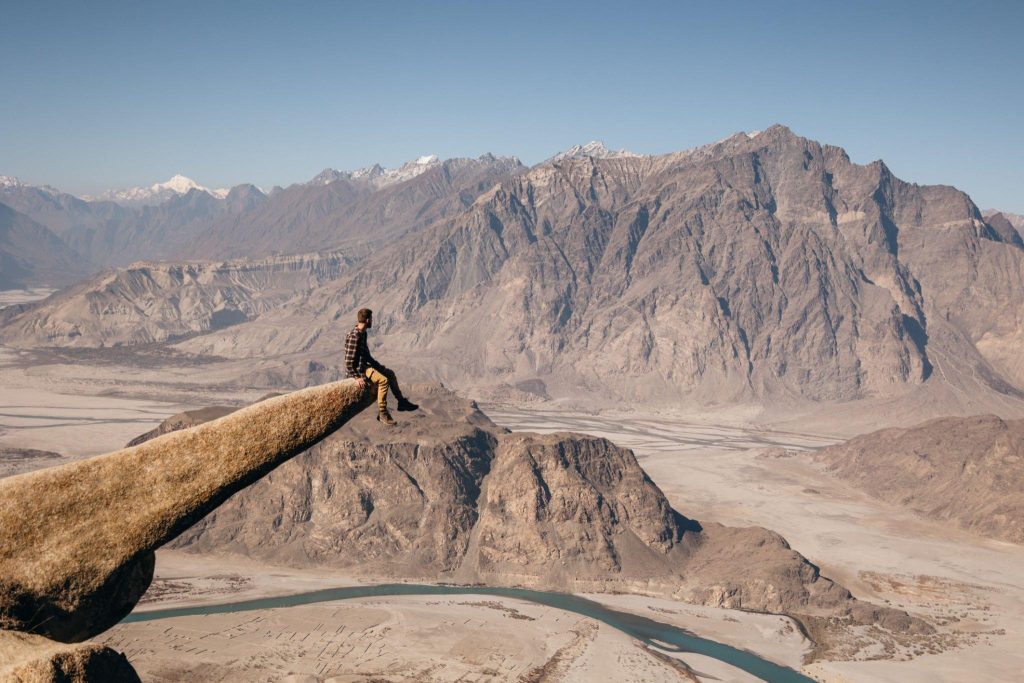
The Gilgit-Baltistan region is a treasure trove of towering peaks and turquoise lakes. Fairy Meadows and Skardu offer a glimpse of the majestic Karakoram Range.
Nestled in the northernmost part of Pakistan, Gilgit-Baltistan is a jewel that dazzles with its pristine landscapes, towering peaks, and rich cultural heritage.
Often referred to as the ‘Roof of the World’, this region is home to some of the world’s highest mountains, including the majestic K2.
It’s not just the geography that sets it apart; the tapestry of diverse cultures, languages, and traditions, deeply influenced by its historical position on the ancient Silk Road, makes it a melting pot of Central Asian and South Asian civilizations.
From the turquoise waters of Attabad Lake to the centuries-old Baltit Fort, Gilgit-Baltistan offers a journey of awe and wonder, beckoning travelers to explore its untouched beauty and immerse themselves in its captivating history.
Mohenjo-Daro: A Glimpse into the Past
Mohenjo-Daro, an archaeological marvel, takes us back to the ancient Indus Valley Civilization. The well-planned city layout and advanced drainage system are awe-inspiring.
Mohenjo-Daro, translated as the ‘Mound of the Dead Men,’ stands as one of the most remarkable archaeological discoveries of the 20th century.
Nestled in present-day Pakistan, this city is a testament to the advanced urban planning and architectural prowess of the Indus Valley Civilization, which thrived around 2500 BCE.
The meticulously planned streets, advanced drainage systems, and the iconic Great Bath all hint at a society that was both sophisticated and forward-thinking.
As one of the world’s earliest urban centers, Mohenjo-Daro offers a rare glimpse into a bygone era, challenging our perceptions of ancient civilizations.
Though its decline remains a mystery, the ruins echo tales of a city that once bustled with life, commerce, and culture.
Shalimar Gardens: A Mughal Retreat
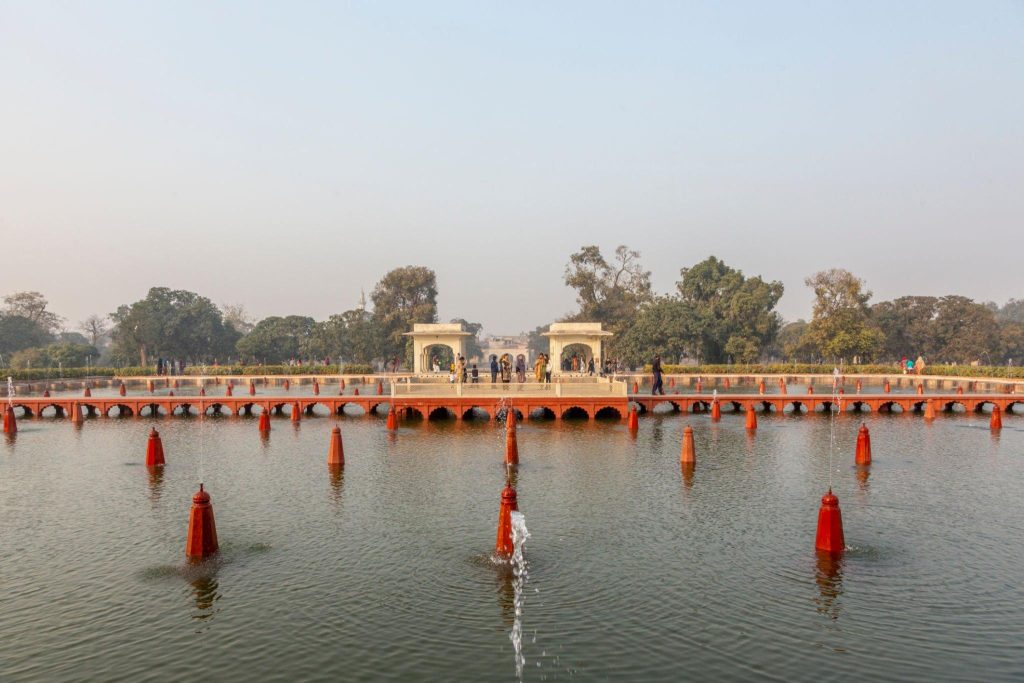
The Shalimar Gardens in Lahore are a masterpiece of Mughal garden design. These terraced gardens with flowing water channels are a testament to the aesthetics of the past.
The Shalimar Gardens, located in Lahore, Pakistan, are a splendid testament to Mughal architecture and landscaping genius.
Commissioned by Emperor Shah Jahan in the 17th century, the gardens are a harmonious blend of nature and architectural craftsmanship.
Spread over three levels, each terrace ascends above the other, symbolizing the Mughal concept of paradise. Water channels, shimmering with sunlight, crisscross the terraced levels with elegant marble pavilions providing restful vantage points.
The meticulous design, featuring 410 fountains, creates a serene ambiance punctuated by the delicate sound of flowing water.
This UNESCO World Heritage site stands not just as an ode to royal indulgence but also as a timeless reminder of a bygone era’s commitment to beauty, art, and culture.
Pakistan Monument: Symbol of Unity
The Pakistan Monument in Islamabad represents the four provinces of the country coming together. Its unique design and stunning location on the Shakarparian Hills make it a must-visit.
Nestled in the heart of Islamabad, the Pakistan Monument stands tall as a testament to the nation’s rich history and unwavering spirit.
With its blooming flower-like structure, the monument represents the four provinces and three territories that make up Pakistan.
More than just an architectural marvel, it serves as a constant reminder of the sacrifices made by the forefathers during the country’s quest for independence.
As the sun sets, the monument bathed in a radiant glow becomes a beacon of hope, symbolizing the aspirations and dreams of its people.
For locals and tourists alike, the Pakistan Monument is not just a structure, but a narrative of unity, progress, and an enduring commitment to a shared future.
Faisal Mosque: A Modern Marvel
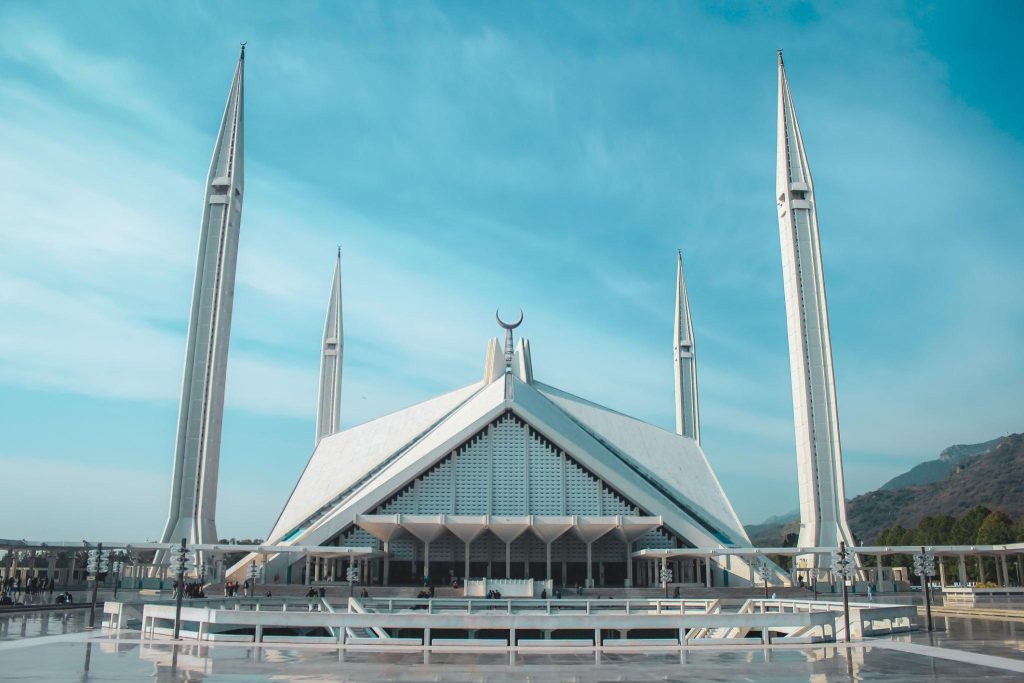 The Faisal Mosque in Islamabad, with its contemporary design and vast prayer hall, is a fusion of modernity and tradition. Nestled amidst the majestic Margalla Hills of Islamabad, the Faisal Mosque stands as a symbol of unity, faith, and architectural wonder in Pakistan.
The Faisal Mosque in Islamabad, with its contemporary design and vast prayer hall, is a fusion of modernity and tradition. Nestled amidst the majestic Margalla Hills of Islamabad, the Faisal Mosque stands as a symbol of unity, faith, and architectural wonder in Pakistan.
With its contemporary and unique design, devoid of the traditional domed structure, it diverges from the conventional mosque architecture, making it one of the most iconic landmarks of the country.
Commissioned in the 1970s and named after the late King Faisal of Saudi Arabia, this mosque is not only the largest in Pakistan but also holds significance as a representation of strong diplomatic ties between Pakistan and Saudi Arabia.
Its serene ambiance, combined with its sprawling courtyards, offers both locals and tourists a tranquil oasis of spirituality amidst the urban setting of the capital city.
Lahore Fort: Where Royalty Resided
The Lahore Fort’s intricate architecture and Sheesh Mahal (Mirror Palace) narrate tales of the Mughal dynasty’s opulence and creativity.
Lahore Fort, locally known as the Shahi Qila, stands as a testament to the rich tapestry of history and architecture in Pakistan’s cultural capital, Lahore.
Nestled in the heart of the old city, this colossal fortress boasts intricate Mughal designs, and its walls whisper tales of bygone empires and invasions.
Spanning over 20 hectares, it’s a blend of majestic palaces, ornate mosques, and verdant gardens that have witnessed the rise and fall of empires, from the Mughal dynasty to the British Raj.
A UNESCO World Heritage Site, the Lahore Fort isn’t just an architectural marvel, but a vibrant emblem of the city’s resilient spirit and historical legacy. A visit promises a journey back in time, offering a panorama of art, culture, and history intertwined.
Tomb of the Seven Sisters: Mystical Heritage
The Tomb of the Seven Sisters in Taxila carries legends of ancient times and the love between seven sisters who faced tragic fates. The “Tomb of the Seven Sisters” stands as an enigmatic testament to time, veiled in legends and embraced by history’s arms.
Nestled amidst ancient landscapes, this tomb carries the whispered tales of seven siblings, each with her own unique story that adds layers to the crypt’s aura.
Historians and adventurers alike have been drawn to its alluring presence, attempting to decipher the myriad of secrets it holds.
Whether considered a sacred burial ground, a monument of reverence, or simply an architectural marvel, the tomb beckons with an almost magnetic allure.
As the sun casts its golden hue over the tomb’s stones, one can’t help but ponder: Who were these seven sisters? And what legacy did they leave behind that continues to captivate generations?
Minar-e-Pakistan: Marking History
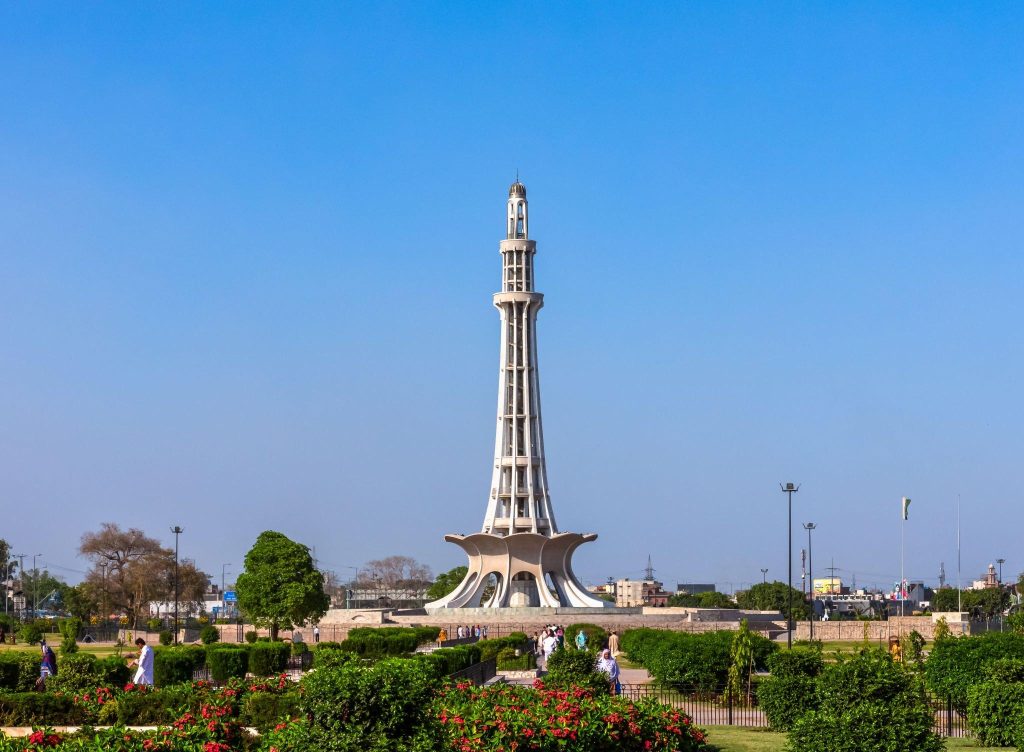
The Minar-e-Pakistan in Lahore stands as a symbol of the nation’s struggle for independence. Visitors can ascend this iconic tower for panoramic views.
Minar-e-Pakistan, often referred to as the “Tower of Pakistan,” stands tall in Lahore, Pakistan’s historical city, as a symbol of the nation’s unwavering resolve to gain independence.
Erected to commemorate the Lahore Resolution of 1940, the monument marks the site where the foundation for Pakistan’s creation was laid.
This iconic tower, with its blend of Mughal, Islamic, and modern architectural elements, not only epitomizes the country’s rich cultural heritage but also serves as a beacon of hope, unity, and freedom for its people.
As visitors approach the monument, they are immediately reminded of the sacrifices made and the visionaries who paved the way for the formation of a separate homeland for the Muslims of the subcontinent. Minar-e-Pakistan is more than just a landmark; it’s the very soul of the nation’s inception.
If you’re interested in discovering more about the hidden gems of historic landmarks like this, be sure to check out “Delaware’s Hidden Gems” on TalesofTravelers.com, where you can explore fascinating insights into what makes places like Minar-e-Pakistan truly special.
Wagah Border: The Beating Retreat Ceremony
The Wagah Border, an emblematic frontier separating India and Pakistan, has evolved into more than just a mere boundary line. Meanwhile, thousands of miles away, in the United States, you can experience a different kind of historical significance in Old Town Sacramento.
Situated approximately 24 km from the city of Lahore in Pakistan and 32 km from Amritsar in India, this border post carries the weight of a tumultuous history, painted with both camaraderie and conflict.
Not just a geopolitical demarcation, the Wagah Border pulsates with passion, nostalgia, and a unique blend of rivalry and fraternity.
Every evening, it transforms into a theater of nationalism, with the iconic Beating Retreat ceremony capturing the essence of two nations locked in an intricate dance of pride and shared heritage. A visit to Wagah offers an intense immersion into the complex tapestry of Indo-Pak relations.
Badshahi Mosque: A Mughal Gem
The Badshahi Mosque in Lahore, a masterpiece of Mughal architecture, impresses with its sheer size and intricate details. The Badshahi Mosque, a marvel of Mughal architecture, stands proudly in Lahore, Pakistan, emanating a rich history and timeless grandeur.
Commissioned by the sixth Mughal Emperor, Aurangzeb, in 1671, it was completed in 1673 and stands as one of the largest and most magnificent mosques in the world.
Its red sandstone edifice and intricate marble inlays showcase the zenith of Mughal craftsmanship, blending Persian, Central Asian, and Indian architectural influences.
Dominating Lahore’s skyline with its colossal domes, towering minarets, and vast courtyard, the mosque has not only served as a spiritual center but also as a testament to the grandeur of the Mughal era.
For centuries, the Badshahi Mosque has been a beacon of faith, art, and history, drawing admirers from around the world.
Babusar Top: Where Earth Touches the Sky
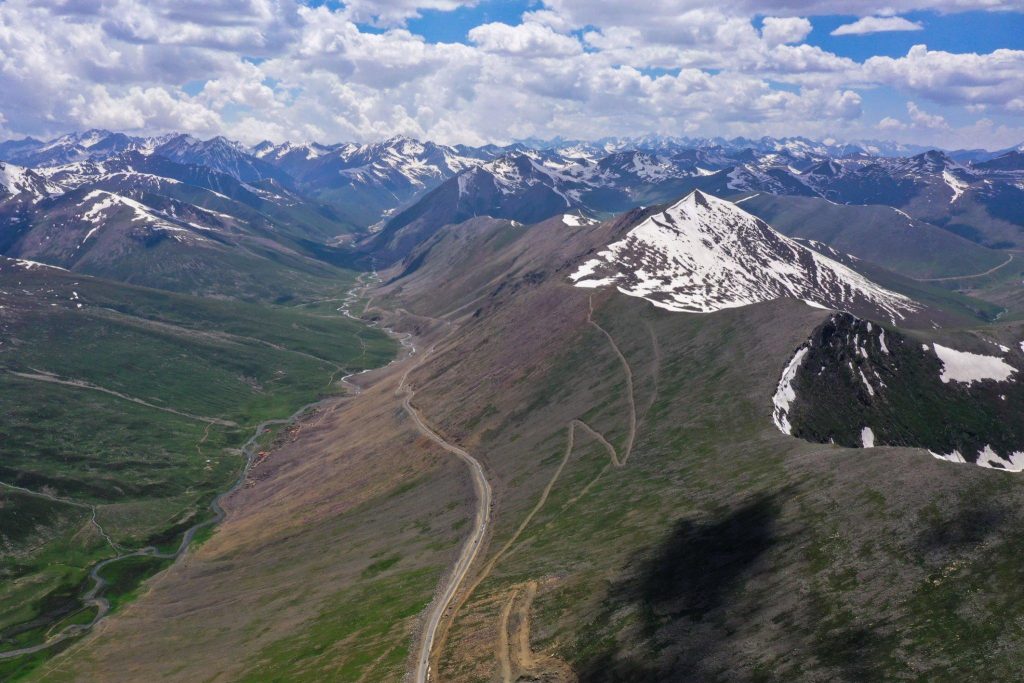
Babusar Top, located at a dizzying altitude, treats travelers to vistas of snow-covered peaks and pristine landscapes. Nestled in the grandeur of the Kaghan Valley, Babusar Top stands as one of Pakistan’s most breathtaking high-altitude locations, with an elevation of about 4,173 meters (13,691 feet).
Often cloaked in a mantle of snow, it acts as a gateway, connecting the Kaghan Valley to Chilas on the Karakoram Highway.
Revered as the highest point in the Kaghan Valley, the view from Babusar Top is nothing short of poetic; vast landscapes dotted with pastures, meandering streams, and undulating mountains stretch as far as the eye can see.
For adventurers and nature enthusiasts alike, Babusar Top offers not just a geographical marvel but an ethereal experience, a place where nature’s majesty is on full display, invigorating the soul and captivating the heart.
Lulusar Lake: Mirror of the Mountains
Lulusar Lake, surrounded by mountains, is a serene spot where the beauty of nature is perfectly reflected. Nestled amidst the majestic peaks of the Hindu Kush range in Pakistan’s Khyber Pakhtunkhwa province, Lulusar Lake is a vision of pristine beauty and serenity.
With its crystal-clear waters reflecting the towering snow-capped mountains that surround it, this lake is often referred to as a hidden jewel of Northern Pakistan.
Spanning an impressive length of 3.3 km and reaching depths of up to 48 meters, Lulusar stands as the primary water source for the Kunhar River.
Apart from its sheer scenic beauty, the lake holds historical significance, being closely associated with the 1857 War of Independence.
As the getaway to the mesmerizing Kaghan Valley, Lulusar Lake beckons travelers and nature enthusiasts to immerse themselves in its tranquil and untouched splendor.
Hunza Valley: A Gem in the North
Hunza Valley’s terraced fields and traditional villages offer a glimpse into a way of life that has remained unchanged for centuries. Hunza Valley, often referred to as “Heaven on Earth”, is a serene paradise nestled in the heart of Pakistan’s Gilgit-Baltistan region.
Surrounded by majestic snow-capped peaks, including Rakaposhi and the iconic Ladyfinger Peak, this valley boasts lush green terraces, crystalline rivers, and enchanting orchards.
Home to the ancient Silk Route, its history intertwines with tales of traders, explorers, and warriors. The people of Hunza, known for their longevity and radiant health, are a testament to the valley’s purity and the richness of its produce.
From apricots to apples, the valley teems with organic bounty. As a confluence of natural beauty, ancient history, and vibrant culture, Hunza Valley isn’t just a travel destination; it’s an experience that rejuvenates the soul.
Hingol National Park: Where the Desert Meets the Sea
Hingol National Park, with its unique ecosystem, is home to diverse wildlife and stunning rock formations.Hingol National Park, stretching across the vast expanse of Balochistan, Pakistan, is the largest national park in the country, encompassing an impressive 6,100 square kilometers.
Set against the backdrop of the Makran Coastal Range, this national treasure is a medley of rugged terrains, deep canyons, towering cliffs, and a vibrant river, the Hingol River, meandering through its heart.
Not only is the park a haven for a diverse range of wildlife, including the endangered Balochistan leopard, but it also hosts unique geological formations and sacred Hindu sites, like the mysterious Hinglaj Mata temple.
For adventurers and nature enthusiasts, Hingol offers an untouched wilderness, rich with biodiversity and soaked in ancient legends, waiting to be explored.
Pakistan-China Border: Khunjerab Pass
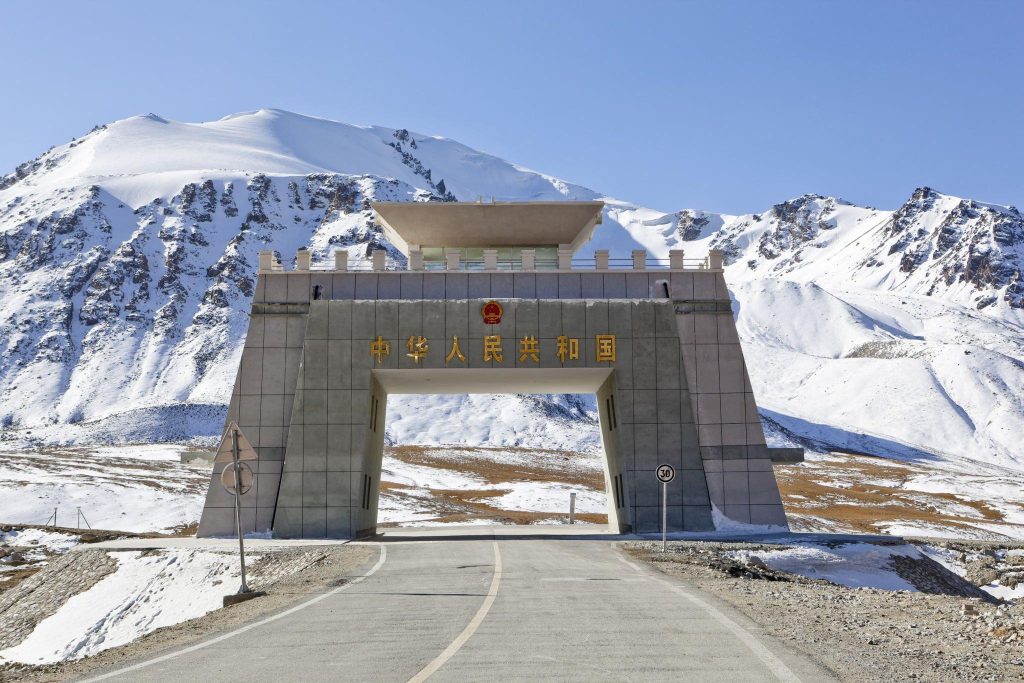
The Khunjerab Pass, situated on the Pakistan-China border, is one of the world’s highest international crossings. The Pakistan-China border, stretching approximately 523 miles, is an incredible fusion of treacherous terrains and breathtaking beauty.
Located in the high mountains of the Karakoram Range, this boundary serves as the demarcation line between two of Asia’s most influential countries, Pakistan and China.
With the historic Khunjerab Pass acting as a key gateway, this border not only holds geopolitical significance but also stands as a testament to the long-standing friendship between the two nations.
The recently developed China-Pakistan Economic Corridor (CPEC), which passes through this region, further highlights its strategic importance, aiming to boost trade and strengthen the bilateral relationship.
Beyond politics and trade, the border area is an untouched paradise, drawing trekkers and travelers from around the world to its serene landscapes.
Attabad Lake: Nature’s Artistry
Attabad Lake, formed after a massive landslide, is a turquoise gem set against a backdrop of mountains.Pakistan is famous for these and countless more enchanting destinations that embody the nation’s vibrant heritage, natural wonders, and warm hospitality.
From the bustling cities to the serene valleys, each corner of Pakistan offers a unique story waiting to be discovered. Swaying amidst the rugged landscape of northern Pakistan, the Husseini Suspension Bridge is often dubbed one of the world’s most dangerous bridges.
Connecting the towns of Zarabad and Hussaini in the Upper Hunza region, this bridge showcases a delicate dance of frail wooden planks strung together by bits of rusted wire and rope.
Stretching across the roaring Hunza River, the bridge offers a breathtaking view of the surrounding Karakoram Mountains.
More than just a means of transportation, it symbolizes the indomitable spirit of the local people. Despite its rickety appearance, it stands as a testament to human ingenuity, resilience, and the relentless drive to connect even in the face of nature’s fierce challenges.
Conclusion
In a world of diverse travel experiences, Pakistan stands out as a destination that promises to mesmerize and inspire. Its rich cultural tapestry, historical landmarks, and breathtaking landscapes make it a must-visit for travelers seeking authenticity and adventure.
Whether you’re exploring the bustling cities or trekking through the serene valleys, Pakistan’s charm and beauty are bound to leave an indelible mark on your heart.

